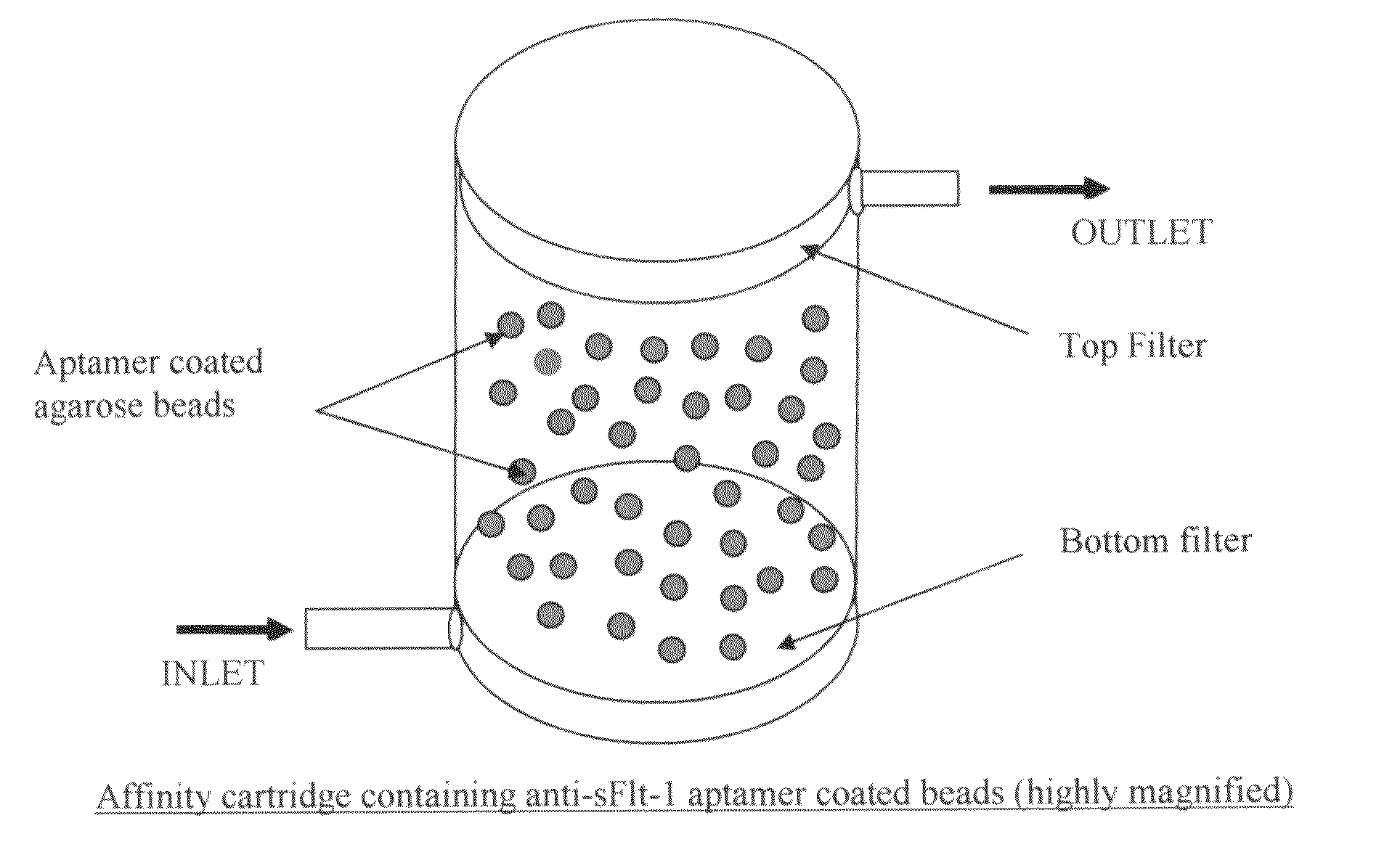Treatment of pre-eclampsia using targeted apheresis
a technology of apheresis and preeclampsia, which is applied in the direction of suction devices, medical devices, other medical devices, etc., can solve the problems of preeclampsia in pregnancy, preeclampsia in pregnancy, and death of the mother or baby, so as to reduce the risk of developing eclampsia during pregnancy
- Summary
- Abstract
- Description
- Claims
- Application Information
AI Technical Summary
Benefits of technology
Problems solved by technology
Method used
Image
Examples
Embodiment Construction
[0016]This invention teaches a method of targeted apheresis for treating pre-eclampsia during pregnancy. Targeted apheresis is used to remove the circulating sFlt-1 receptors that are believed to be responsible for the symptoms of eclampsia. The inventors had earlier proposed an apheresis method for removing sFlt-1 using immobilized anti-Flt-1 antibody within an affinity device. There is however some concern regarding the use of anti-sFlt-1 antibody prepared from immunized animals because of the possibility that even a small amount of foreign protein leaching out of the immunosorbent and entering the blood may elicit an immune reaction in the patient. The inventors then made the surprising discovery that using anti-sFlt-1 aptamers instead of anti-sFlt-1 antibody in the affinity device would eliminate the possibility of causing an immune reaction in the patient; and in addition would result in many other advantages that were not previously recognized. There are no prior reports on th...
PUM
 Login to View More
Login to View More Abstract
Description
Claims
Application Information
 Login to View More
Login to View More - R&D
- Intellectual Property
- Life Sciences
- Materials
- Tech Scout
- Unparalleled Data Quality
- Higher Quality Content
- 60% Fewer Hallucinations
Browse by: Latest US Patents, China's latest patents, Technical Efficacy Thesaurus, Application Domain, Technology Topic, Popular Technical Reports.
© 2025 PatSnap. All rights reserved.Legal|Privacy policy|Modern Slavery Act Transparency Statement|Sitemap|About US| Contact US: help@patsnap.com


